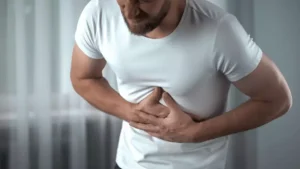
Dr. Hoffman has successfully treated hundreds of patients battling addiction. Dr. Hoffman is the Co-Founder and Chief Medical Officer of AddictionHelp.com and ensures the website’s medical content and messaging quality. This health condition is what’s responsible for a person experiencing alcohol withdrawal. If a person abuses alcohol, they are drinking more than the recommended amount for safe drinking habits by the Centers for Disease Control and Prevention (CDC). The psychological side of addiction represents the compulsion of the mind to drink or use based on a perceived need the substance fills.

Why Is Alcohol Addictive?
For addictions and chemical dependences to street drugs, prescription drugs, designer drugs, tobacco, and alcohol, by far the best way to break the habit is detox and rehabilitation. If you or a loved one has a problem with any kind of drug (alcohol included), you should seek help before more damage is done, to the person’s brain, life, and relationships. When people use the term substance abuse, they are usually referring to the use of illegal drugs such as cocaine, heroin, and methamphetamine. These substances are illegal because of their high risk for abuse and dangerous side effects. In regard to the physically addictive aspect, drinking alcohol stimulates the release of endorphins and dopamine, both of which produce euphoric sensations, such as feelings of pleasure.
What Is Substance Misuse?
Long-term exposure to substances can cause a person to develop mental and physical dependence. The Alcohol Treatment Navigator provides a wealth of treatment resources, including tips on finding a quality treatment center and a toolkit for your search. You can also visit the SAMHSA site to search for alcohol and drug rehab centers anywhere in the United States.
Short-term effects
This means their addiction or drug abuse has changed them, at a minimum, during the times they are under the influence. During the course of an addictive lifestyle, the addict’s life may be in shambles. The quality of life of both a drug addict and alcoholic will be deteriorated. In addition, those who have an alcohol or drug addiction are https://ecosoberhouse.com/ often compulsive.
- Jessica Plonchak serves as Executive Clinical Director at ChoicePoint.
- For example, someone might drink to increase social comfort or decrease stress.
- Detox involves the process of ridding the body of the toxic substance and addressing the physical symptoms of withdrawal.
- Substances can include alcohol, prescription and over-the-counter drugs, illegal drugs, inhalants and solvents, nicotine, and even coffee.
- Sometimes you may see immediate improvement, but it may take longer to show results.
Other Commonly Abused Substances
Some people think that MAT is replacing one drug with another. The medications prescribed in a MAT program aim to reduce frequent cravings and help you manage withdrawal symptoms to commit to an addiction-free life. If you or someone you know is showing signs of alcohol abuse or addiction, the best thing you can do is to encourage them to get timely help. We know that financial burdens can come in the way of quality treatment. To overcome this, ChoicePoint accepts all insurances to bring you cost-effective treatment options. With the advent of telehealth addiction treatment programs, addiction treatment is more accessible than ever.
SUD and substance misuse are treatable with certain behavioral therapies and medications. This article outlines what substance misuse is and compares it to SUD. With alcoholism, the most important component for alcohol treatment is usually time. A person may need varying levels of care with ‘step-down’ levels to foster long-term sobriety. If a person has mild abuse issues, they may be able to join a support group, such as Alcoholics Anonymous (AA).

Treatment

In 1984, it was approved by the FDA for the treatment of use of drugs such as heroin, morphine, and oxycodone. At the time, it was marketed by DuPont under the brand name Trexan. An extended-release, monthly injectable form of naltrexone is marketed under the trade name Vivitrol. It works in the brain by blocking the high that people experience when they drink alcohol or take opioids like heroin and cocaine. We believe that with love and support, you can save a life. If you want your loved ones to recover in a supportive environment, you can count on ChoicePoint’s compassionate team of licensed professionals to provide quality treatment without negative stigma.
- The information we provide is not intended to be a substitute for professional medical advice, diagnosis or treatment.
- Another way to manage withdrawal symptoms is through detox programs.
- Learn the key differences, such as drinking habits, warning signs, and side effects.
- Although alcoholism is more dangerous, drugs are very dangerous as well.
- A most commonly asked question after alcohol is considered a drug is which type of alcohol is the most addictive.

According to research, medications seem to be a positive part of the most effective combination for the treatment of alcohol use disorders—it’s also underused as a treatment method. difference between drugs and alcohol You can only help someone when you have all the right information. The more you know, the more you will understand how to help them. In that case, it is important to know about the 5 stages of addiction, the recovery process, and withdrawal symptoms to help them at every step until they recover. Outpatient treatment means that you can attend treatment sessions at addiction treatment centers and then return home to be with your loved ones.
What Is the Life Expectancy of Someone Who Is Addicted to Drugs?
This coping mechanism can become a habit that may seem impossible to break. Fortunately, there are many alcohol treatment centers available that offer psychotherapy to help individuals find the motivation and hope to begin their recovery process. Antabuse (disulfiram) was the first medicine approved for the treatment of alcohol misuse and alcohol dependence. It works by causing a severe adverse reaction when someone taking the medication consumes alcohol.
During the intervention, these people gather together to have a direct, heart-to-heart conversation with the person about the consequences of addiction. Stimulants include amphetamines, meth (methamphetamine), cocaine, methylphenidate (Ritalin, Concerta, others) and amphetamine-dextroamphetamine (Adderall XR, Mydayis). They’re often used and misused in search of a “high,” or to boost energy, to improve performance at work or school, or to lose weight or control appetite. And it can feel different to be addicted to a legal substance than to be addicted to an illicit one.
